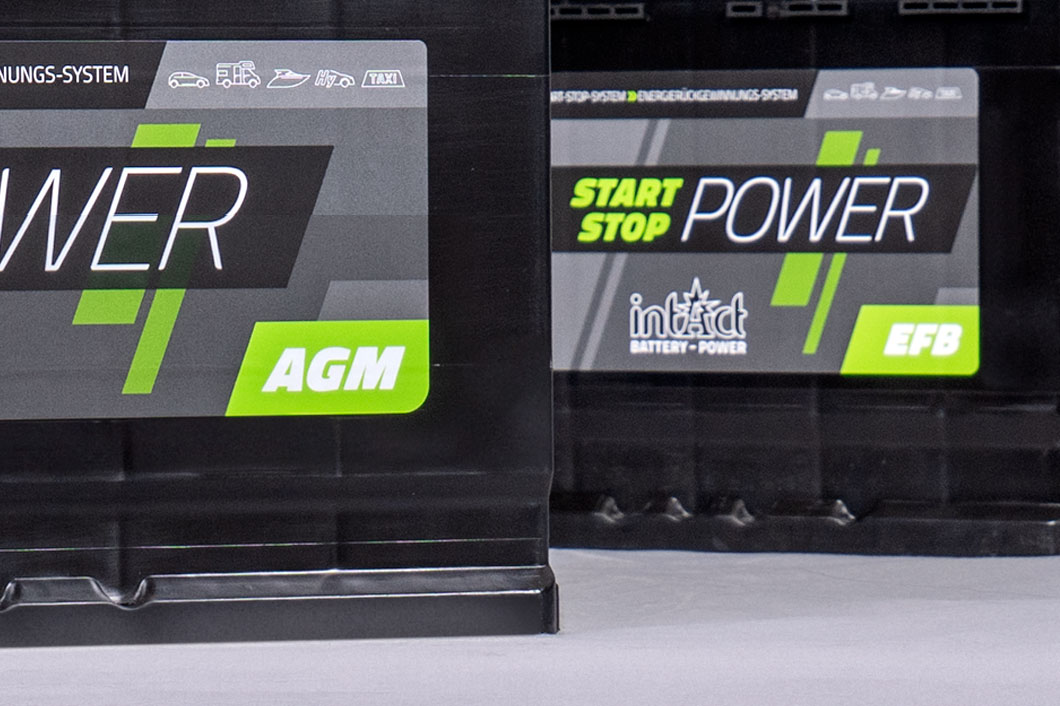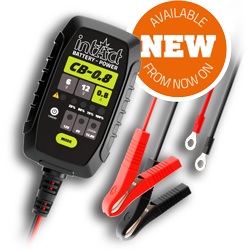Start-stop batteries: Your comprehensive guide to modern car batteries


The automatic start-stop system has become an integral part of modern vehicles. It automatically switches off the engine when you stop to save fuel and CO₂ emissions. This places high demands on the battery, as it has to supply all electrical consumers while the engine is off. Conventional car batteries are not designed for this load and would quickly fail. A special start-stop battery is therefore essential, as it must be extremely powerful and cycle-resistant.
| Voltage | 12V |
| Capacity | 45 Ah (c20) |
| Position of terminal | 0 |
| Size (LxWxH) | 237x127x225mm |
| CCA | 400 A (EN) |
| Voltage | 12V |
| Capacity | 45 Ah (c20) |
| Position of terminal | 0 |
| Size (LxWxH) | 237x127x225mm |
| CCA | 380 A (EN) |
| Voltage | 12V |
| Capacity | 45 Ah (c20) |
| Position of terminal | 1 |
| Size (LxWxH) | 237x127x225mm |
| CCA | 380 A (EN) |
| Voltage | 12V |
| Capacity | 50 Ah (c20) |
| Position of terminal | 1 |
| Size (LxWxH) | 260x173x206mm |
| CCA | 800 A (EN) |
| Voltage | 12V |
| Capacity | 60 Ah (c20) |
| Position of terminal | 1 |
| Size (LxWxH) | 230x172x220mm |
| CCA | 520 A (EN) |
| Voltage | 12V |
| Capacity | 60 Ah (c20) |
| Position of terminal | 0 |
| Size (LxWxH) | 230x172x220mm |
| CCA | 520 A (EN) |
| Voltage | 12V |
| Capacity | 68 Ah (c20) |
| Position of terminal | 1 |
| Size (LxWxH) | 260x175x225mm |
| CCA | 730 A (EN) |
| Voltage | 12V |
| Capacity | 68 Ah (c20) |
| Position of terminal | 0 |
| Size (LxWxH) | 260x175x225mm |
| CCA | 730 A (EN) |
| Voltage | 12V |
| Capacity | 95 Ah (c20) |
| Position of terminal | 0 |
| Size (LxWxH) | 304x173x220mm |
| CCA | 800 A (EN) |
| Battery | Voltage | Capacity | CCA | Length | Width | Height | Position of terminal | Terminal | Datasheet |
|---|---|---|---|---|---|---|---|---|---|
| EFB45SS-0-ASIA | 12V | 45 Ah (c20) | 400 A (EN) | 237 | 127 | 225 | 0 | 1 | |
| AGM45SS-0-ASIA | 12V | 45 Ah (c20) | 380 A (EN) | 237 | 127 | 225 | 0 | 1 | |
| AGM45SS-1-ASIA | 12V | 45 Ah (c20) | 380 A (EN) | 237 | 127 | 225 | 1 | 1 | |
| AGM50-900-SS | 12V | 50 Ah (c20) | 800 A (EN) | 260 | 173 | 206 | 1 | 1 | |
| AGM50SS | 12V | 50 Ah (c20) | 570 A (EN) | 207 | 175 | 190 | 0 | 1 | |
| EFB55SS | 12V | 55 Ah (c20) | 540 A (EN) | 207 | 175 | 190 | 0 | 1 | |
| AGM60SS | 12V | 60 Ah (c20) | 680 A (EN) | 242 | 175 | 190 | 0 | 1 | |
| EFB60SS-1-ASIA | 12V | 60 Ah (c20) | 520 A (EN) | 230 | 172 | 220 | 1 | 1 | |
| EFB60SS-0-ASIA | 12V | 60 Ah (c20) | 520 A (EN) | 230 | 172 | 220 | 0 | 1 | |
| EFB60SS | 12V | 60 Ah (c20) | 640 A (EN) | 242 | 175 | 190 | 0 | 1 | |
| EFB65SS | 12V | 65 Ah (c20) | 650 A (EN) | 278 | 175 | 175 | 0 | 1 | |
| EFB68SS-1-ASIA | 12V | 68 Ah (c20) | 730 A (EN) | 260 | 175 | 225 | 1 | 1 | |
| EFB68SS-0-ASIA | 12V | 68 Ah (c20) | 730 A (EN) | 260 | 175 | 225 | 0 | 1 | |
| EFB70SS | 12V | 70 Ah (c20) | 760 A (EN) | 278 | 175 | 190 | 0 | 1 | |
| AGM70SS | 12V | 70 Ah (c20) | 760 A (EN) | 278 | 175 | 190 | 0 | 1 | |
| EFB75SS | 12V | 75 Ah (c20) | 730 A (EN) | 315 | 175 | 175 | 0 | 1 | |
| EFB80SS | 12V | 80 Ah (c20) | 800 A (EN) | 315 | 175 | 190 | 0 | 1 | |
| AGM80SS | 12V | 80 Ah (c20) | 800 A (EN) | 315 | 175 | 190 | 0 | 1 | |
| AGM95SS | 12V | 95 Ah (c20) | 850 A (EN) | 353 | 175 | 190 | 0 | 1 | |
| EFB95SS-0-ASIA | 12V | 95 Ah (c20) | 800 A (EN) | 304 | 173 | 220 | 0 | 1 | |
| EFB95SS-1-ASIA | 12V | 95 Ah (c20) | 800 A (EN) | 304 | 173 | 220 | 1 | 1 | |
| EFB100SS | 12V | 100 Ah (c20) | 900 A (EN) | 353 | 175 | 190 | 0 | 1 | |
| EFB105SS | 12V | 105 Ah (c20) | 950 A (EN) | 394 | 175 | 190 | 0 | 1 | |
| AGM105SS | 12V | 105 Ah (c20) | 950 A (EN) | 394 | 175 | 190 | 0 | 1 |

Perfect care for start-stop batteries: The CB-3.8 charges gently, reactivates deeply discharged batteries and protects against overcharging, sparks & short circuits. Compatible with lead-acid and lithium batteries - for reliable starting at all times.
Discover CB-3.8



What is an EFB battery? EFB stands for "Enhanced Flooded Battery", an improved wet battery. Its liquid electrolyte with special additives and polyester fleece improves cycle stability and charge absorption.






EFB batteries are the option for simple start-stop systems or cars without start-stop with many consumers or if you drive your car a lot in city traffic and on short journeys.
If an EFB car battery is installed in your car at the factory, you can also upgrade to an AGM car battery at any time.

What is an AGM battery? AGM stands for "Absorbent Glass Mat". The electrolyte is bound in a glass fiber mat. Tightly compressed plates reduce material abrasion and thus extend the service life.







AGM batteries are the first choice for vehicles with advanced start-stop systems, recuperation and extensive electrical equipment. They are robust and deliver reliable starting performance even in extreme temperatures.
Please note: If an AGM battery is installed in your car at the factory, you must replace it with an AGM start-stop battery. It is not possible to downgrade to an EFB battery!


Even without an automatic start-stop system, a start-stop battery (EFB or AGM) can be useful, especially if you have a lot of electrical consumers or only drive short distances for the most part.
However, before you install a start-stop battery in your "normal" car, you should check whether your alternator supplies enough energy to cover the additional power requirement. Because if your alternator supplies too little energy, your battery will never be fully charged, which can lead to a deep discharge and therefore battery failure in the long term.
You should always check the voltage of your car battery regularly and recharge it with a battery charger if necessary. To save you the hassle of opening the hood and measuring with a voltmeter, we recommend our intAct Battery-Guard. This allows you to easily monitor the charge status of your battery via smartphone.
